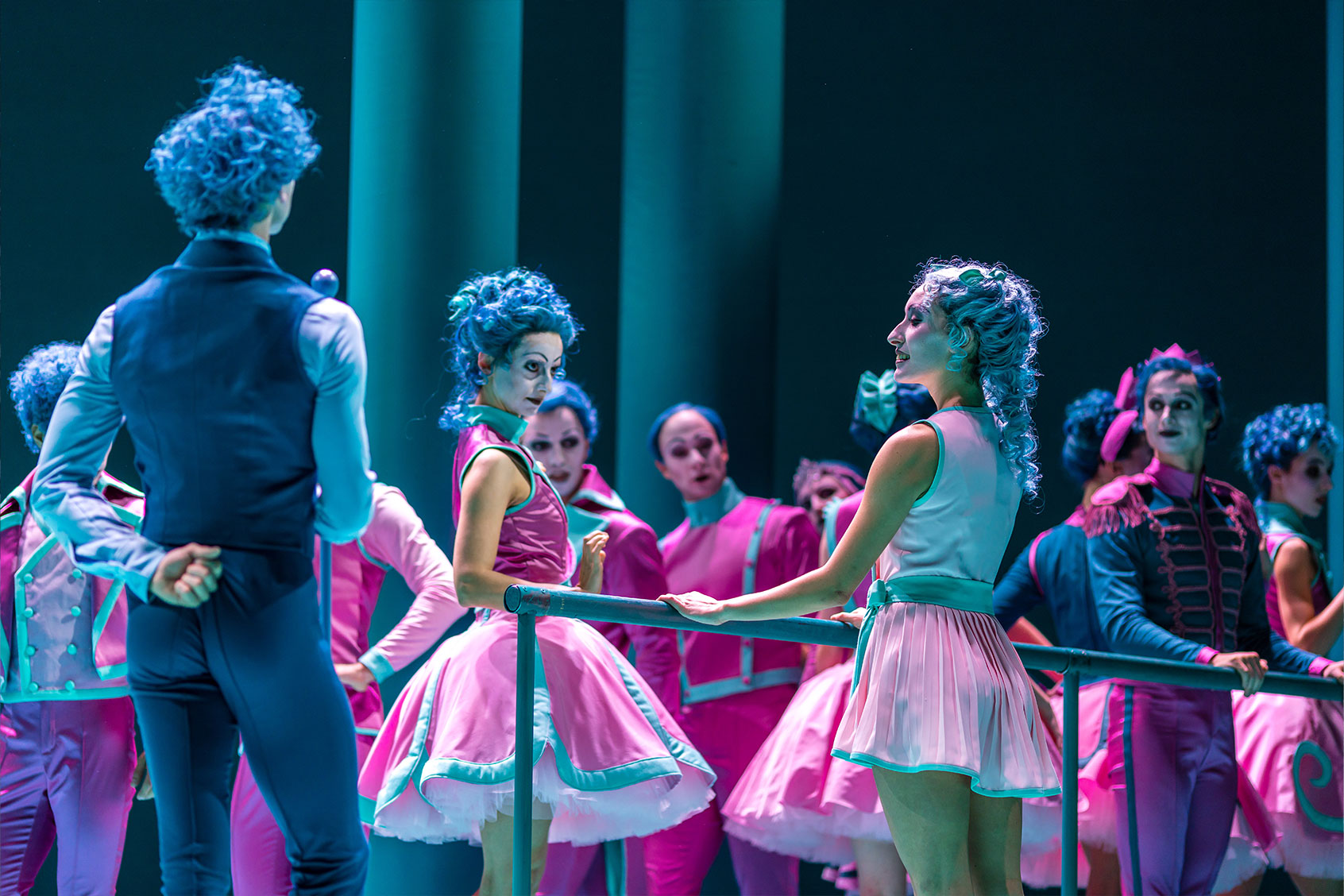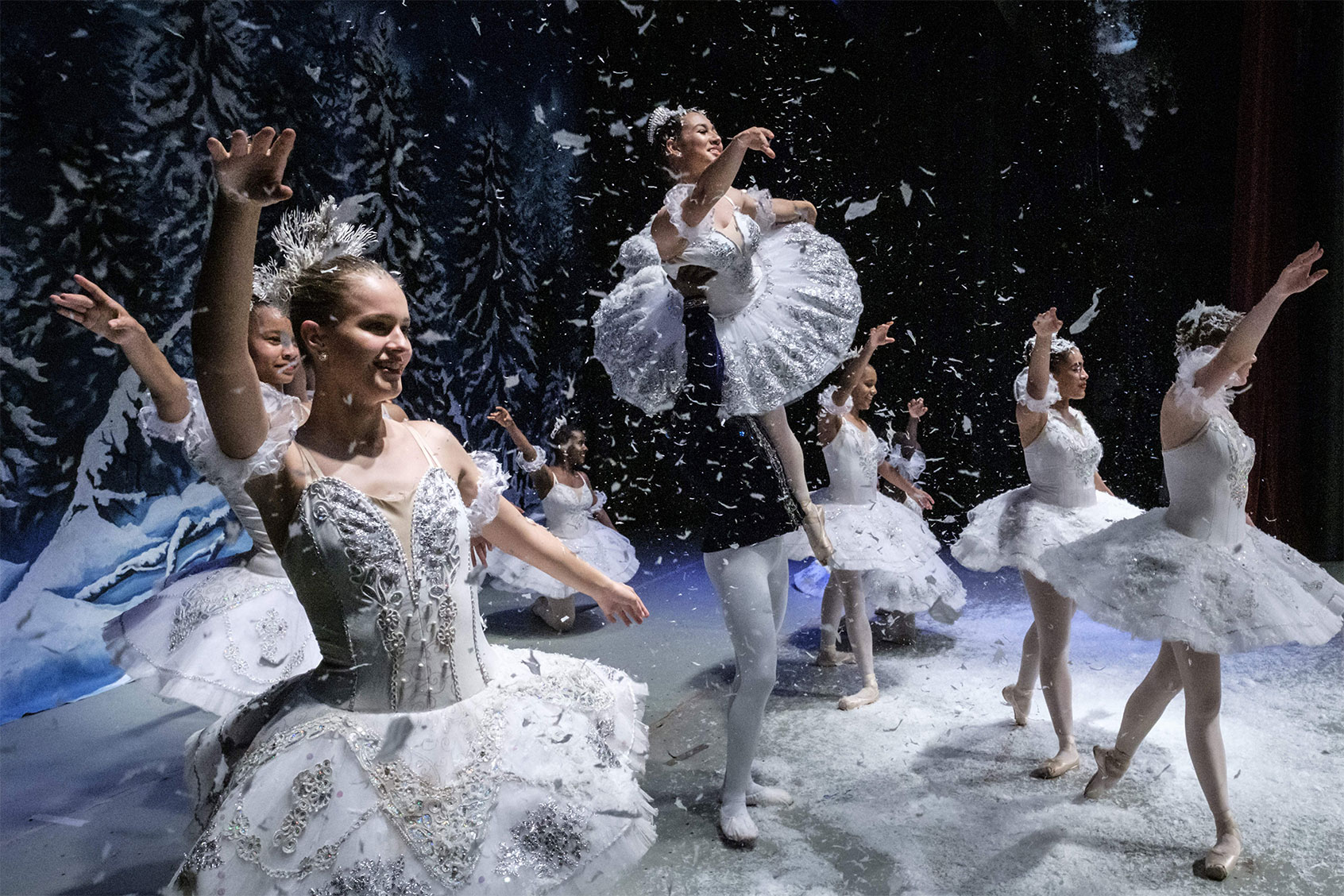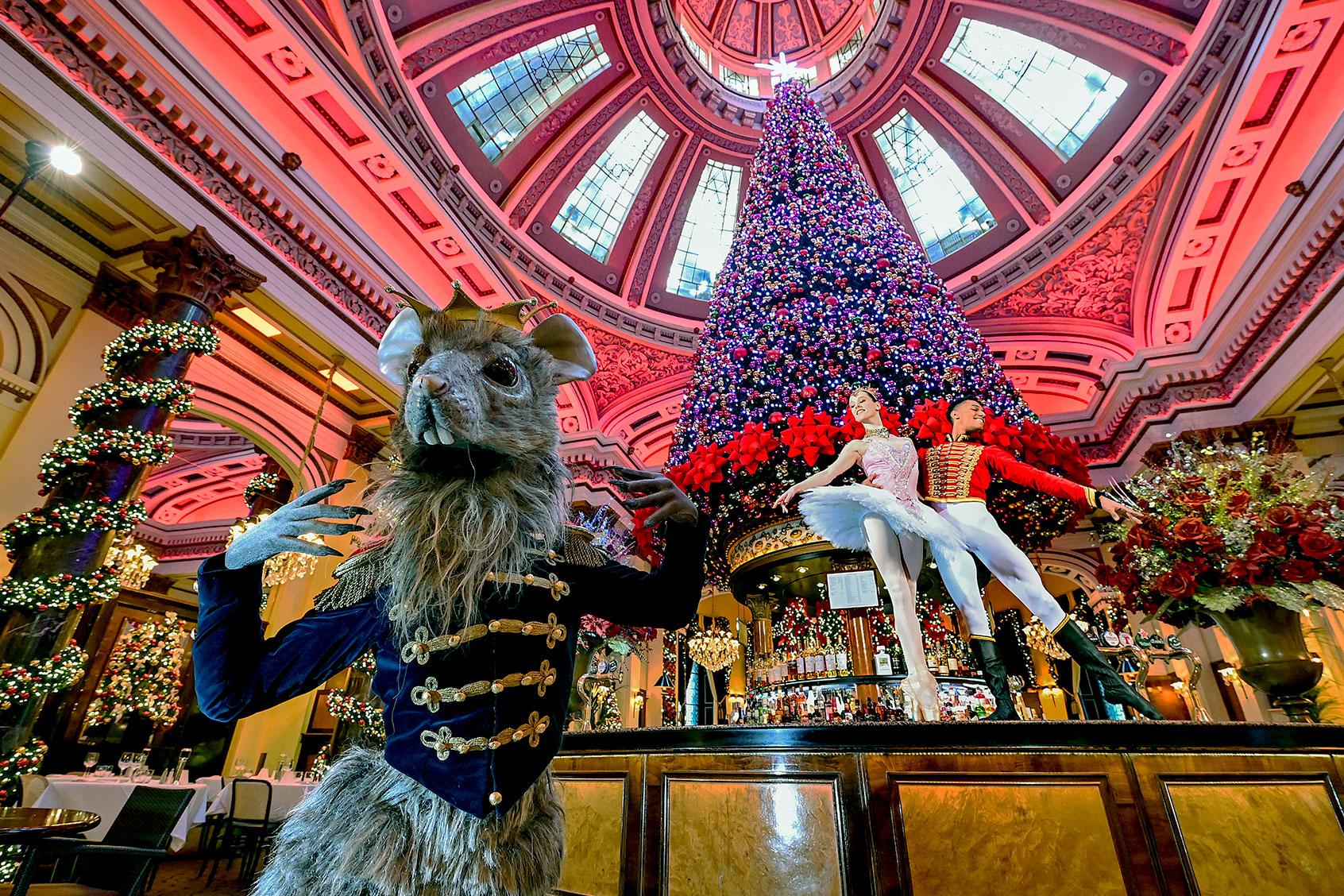It was over before it even really began. At 16 years old, in ballet company practice, I watched a childhood dream crumble before me in the floor-to-ceiling mirrors as my knee crumbled, dislocating to the horror of the dancers all around me. I wasn’t doing anything strenuous when I suffered the injury that would knock me out of ballet forever. I was simply standing at the barre, warming up, something I did every day as I rehearsed with my company for hours.
But every night, I was performing in “The Nutcracker,” and had been practicing the ballet for weeks. And that, as it turns out, is a lot.
“The Nutcracker” is a holiday tradition, as Christmas-y for many people as cookies, presents and trees. It’s something to do, an excuse to dress up and expose the family to culture. It’s also a long, gruelingly intense ballet with multiple set changes and many performers, including a whole host of young children as party guests, a bunch of rats, and in the case of The Joffrey Ballet production, dancing walnuts.
The seasonal story of a girl named Clara who’s given a nutcracker doll by her Uncle Drosselmeyer, which Pyotr Tchaikovsky debuted in 1892 in St. Petersburg, Russia, is a cash cow for theaters and ballet companies. You must do a “Nutcracker.” It’s one of the few ballets that the average non-ballet fan might recognize, let alone attend.
In 2019 the New York City Ballet earned over $15.3 million in ticket sales from “The Nutcracker,” as Town & Country wrote, describing the ballet as “the company’s most lucrative production.” In 2017, The Economist reported that “The Nutcracker” can be responsible for up to 45% of the annual revenue of a ballet company and “you can see at least one version in every state.” There are so many “Nutcrackers,” it’s hard to keep track of them all.
And still, it’s not enough. Ohio’s BalletMet does a lottery for tickets for students. This year, “Nutcracker” need may be especially high due to the pandemic, which saw many performances canceled or go virtual the first few years of COVID.To keep up with demand and get that dough from ticket sales, dancers must do quite a few performances of “The Nutcracker”— and here’s where the trouble may start. Because “The Nutcracker”? It’s trouble.
Dance is a rigorous sport as much as an art, and dancers are serious athletes who are no strangers to injury. “The Nutcracker” has seen a lot of them. Dancer James Whiteside had a patellar tendon disconnect while performing the ballet in 2021. He had already done two performances but was added to another matinee after a dancer become ill. In 2016, Nicole Ciapponi danced in The Joffrey Ballet’s “Nutcracker” with her pointe shoes hiding the heavy scar tissue on her ankle from where a surgical screw was taken out. The screw had kept her foot in place, due to a Lisfranc injury, but as USA Today wrote, the screw “caused Ciapponi to limp, so she had it removed.”
We’re masters of making it all seem beautiful, hiding even the fact that we’re breathing.
Accidents in “The Nutcracker” are so common there are injuries named after the ballet. A nutcracker fracture is a foot fracture of the cuboid bone. A 2015 issue of the professional publication “Journal of Dance Medicine & Science” contains a case study of a ballerina who suffered a nutcracker fracture while in “The Nutcracker.”
You may have seen a dancer injured on stage without realizing it. Certainly, you’ve seen one in pain because we’re masters of making it all seem beautiful, hiding even the fact that we’re breathing (perhaps one of the reasons in my post-ballet life I have failed spectacularly at doing yoga, which is all about the breath).
During another “Nutcracker” performance, before my injury, I was in the wings backstage watching older girls perform “The Waltz of the Snowflakes.” I remember thinking how beautiful and perfect they looked, exactly what I aspired to be. When the dance ended, they drifted off stage, silent and floaty in their gossamer tutus, and I watched in horror as one of the dancers, my friend, fell onto the floor, sobbing. She had been kicked hard in the stomach by another dancer’s toe shoe, the slipper with a block of hard board in the toe that allows ballerinas to stand en pointe. The injury was bad, and she had been holding it in, continuing to dance.
 In a ballet scene about the ballet, dancers from the Cottbus State Theater dance during a rehearsal for the piece “The Nutcracker”. (Frank Hammerschmidt/picture alliance via Getty Images)Toe shoes are responsible for the blood in slippers. Toward the end of my time as a dancer, new gel inserts to pad the tips of toe shoes, separating bare feet from the packed layers of hard board forming a “box” which allows dancers to stand up on their toes, started to come on the market. We thought they were very fancy, and they were hard to find. We used cotton to try to cushion our feet, which would have to be peeled from our bloodied toes at the end of practice and performances.
In a ballet scene about the ballet, dancers from the Cottbus State Theater dance during a rehearsal for the piece “The Nutcracker”. (Frank Hammerschmidt/picture alliance via Getty Images)Toe shoes are responsible for the blood in slippers. Toward the end of my time as a dancer, new gel inserts to pad the tips of toe shoes, separating bare feet from the packed layers of hard board forming a “box” which allows dancers to stand up on their toes, started to come on the market. We thought they were very fancy, and they were hard to find. We used cotton to try to cushion our feet, which would have to be peeled from our bloodied toes at the end of practice and performances.
A ballerina friend lost toenails. When I danced in “The Waltz of the Flowers,” my costume included a high collar of wire-stiffened petals around my neck, which left welts. The Washington Post once described “The Nutcracker” as “a marathon of pain.” The legendary ballerina Gelsey Kirkland, who danced “The Nutcracker” many times, including opposite Mikhail Baryshnikov, titled her autobiography “Dancing on my Grave.”
One of the tall, movable set pieces had been placed too close to the overhead lights and was on fire.
Then there are the accidents and calamities that come standard with showbiz. I continued performing after I stopped dancing, and Christmas shows, perhaps because of the frantic nature of the holidays, or the rush of the crowds, or the pressure, seem to be especially perilous. I have fond memories of being a member of the Cratchit family in “A Christmas Carol” production and our teamwork when we realized one of the tall, movable set pieces had been placed too close to the overhead lights and was on fire. We adjusted it while not breaking character.
It’s not just that “The Nutcracker” has a lot of cast members — who have sometimes become ill with things such as the norovirus and spread it like an en pointe plague; I caught the chicken pox performing in a Christmas show — it has a lot of sets too, moving pieces that can move the wrong way. Or not move at all. And the snow. A key magical moment of many “Nutcracker” productions is when snow falls from the sky onto the stage floor, as if it has been conjured by Bing Crosby.
 Members of Dance Centre Kenya (DCK) perform during a production of ‘The Nutcracker.’ (YASUYOSHI CHIBA/AFP via Getty Images)But anything on the floor of the stage when you dance is bad news. Sometimes the floor itself is bad news. Dancing for a school assembly once, my dance company realized only after we had arrived at that the floor was solid concrete. It would be murder on our not-cheap shoes and on our feet.
Members of Dance Centre Kenya (DCK) perform during a production of ‘The Nutcracker.’ (YASUYOSHI CHIBA/AFP via Getty Images)But anything on the floor of the stage when you dance is bad news. Sometimes the floor itself is bad news. Dancing for a school assembly once, my dance company realized only after we had arrived at that the floor was solid concrete. It would be murder on our not-cheap shoes and on our feet.
Stage snow can be made of paper, treated to be non-flammable (remember those “Christmas Carol” lights), or shredded plastic, which a dancer with the Oregon Ballet Theatre said gets “stuck in your fake eyelashes.” The snow usually needs to move about the stage, so it might be blown by industrial fans. “You can inhale it,” the dancer told Oregon Live, “so you try very hard not to cough until you get off stage.”
Want a daily wrap-up of all the news and commentary Salon has to offer? Subscribe to our morning newsletter, Crash Course.
Fake snow can cause slips and falls, just like real snow can. It’s slick under satin, leather or canvas ballet shoes, and it’s unpredictable. It can also be expensive. Or maybe the theater where I danced was trying to be thrifty, environmentally friendly, when they swept up the snow at the end of every performance and gathered into great bags to be reused at the next show. By the end of the production’s run, the snow was starting to show some wear. Stagehands had swept up other items with the snow that made its way into the bags and down from sky, like dust and rubber bands. One dancer got something in her contact lens.
And then there was the night a wire coat hanger fell from the sky, like a giant Joan Crawford snowflake, and banged a ballerina in the face. She kept dancing.
Read more
about holiday horror shows

